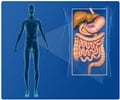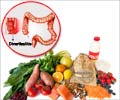A new constipation drug called A3309, targets bile acid recycling in the body, Mayo Clinic researchers say.
The clinical trial of a new constipation medication has shown promising results. The drug seeks to provide to provide relief from constipation in a way that capitalizes on the body’s natural processes, Mayo Clinic researchers say.
The drug, called A3309, targets bile acid recycling in the body. Bile acids, created in the liver and released into the digestive system, aid in breaking down fats and absorbing them into the body. Bile acids also are natural laxatives that promote bowel movements by softening stool and speeding up how fast stool moves through the colon. During digestion, most bile acids are absorbed back into the blood in the lower small intestines for recycling, letting very little bile acids to leak into the colon to help facilitate bowel movements. A3309 works by inhibiting bile acid absorption in the small intestines, allowing more bile acids to enter the colon to stimulate bowel movements.“The new medication is a novel approach which allows the delivery to the colon of normal substances produced by the patient’s own liver to induce a laxative effect,” says Michael Camilleri, M.D., a gastroenterologist and Atherton and Winifred W. Bean Professor at Mayo Clinic and the study’s lead author.
In a Phase II, randomized, double-blind, placebo-controlled study, the Mayo Clinic research team tested the effectiveness of A3309 for two weeks in patients with constipation. The study yielded promising results. The drug sped up the movement of stool through the colon. Patients with constipation who took A3309, compared to those who received placebo, reported significantly less straining and softer stool during bowel movements, says researcher Banny Wong, M.D.
The main side effect of A3309 was abdominal discomfort and pain. Dr. Wong says this occurred mainly before a bowel movement, after which the pain and discomfort usually went away.
According to Dr. Wong, the next step in the drug’s development will be Phase III studies that will involve more people and a longer treatment duration.
Advertisement












